Last Updated on March 11, 2023 by
Planning a trip to Qutub Minar Complex, Delhi? This Qutub Minar guide covers all the places to visit within the complex as well as history and architectural facts.
A towering monument, an architectural masterpiece, historically significant, and one of the most iconic landmarks in the city of Delhi is Qutub Minar. Visiting here is one of the best things to do in Delhi.
Built as a sign of victory and to display the power and significance of the existence of the rulers prevailing at that time, Qutub Minar definitely is a monument of wonder and one of a kind.
Qutb Minar and its monuments comprise of Minar, Mosques, and the Iron Pillar making the complete ensemble of a UNESCO World Heritage Site.
Table of Contents
ABOUT QUTUB MINAR COMPLEX
The Qutub Minar Complex was built by the first ruler of the Delhi sultanate, Qutub-Ud-Din Aibak, and later on, completed by his successors over a period of 150 years. The monument stood tall facing all the attacks and natural calamities to date, narrating the grandeur it witnessed over the years.
Qutub Minar’s height is 72.5 meters and the base diameter is 14.3 meters, making it the tallest brick minaret in the world.
QUTUB MINAR COMPLEX HISTORY
Back in the 12th century, this part of North India was ruled by Mohd. Ghori from the Ghurid dynasty who was known to be the invader from Afghanistan.
Qutub-ud-din Aibak was a General in Mohd. Ghori’s army was responsible to look after the invaded lands in India. After the death of Mohd. Ghori, Aibak formed his own kingdom and started to rule under the name of the Mamluk dynasty thus establishing the rule of the then Delhi Sultanate and him being the first ruler.
Qutub Minar facts say that after Qutb-ud-din Aibak, his son-in-law Iltutmish added stories to it, and was repaired and refurbished by Mohd bin Tuglaq and Sikandar Lodi after the events of lightning and earthquake.
The Qutub Minar Complex is now protected and looked after by the Archeological Survey of India under its Delhi circle of monuments. Others are Agrasen ki Baori, Purana Qila, and a few more.
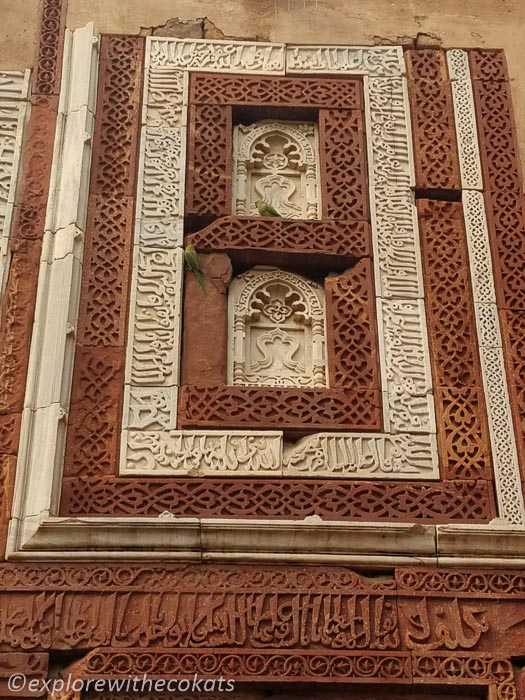
QUTUB MINAR COMPLEX GUIDE
While Qutub Minar always grabs attention, the entire complex has many fantastic monuments that should not be missed.
Qutub Minar
Replete with sandstone and marble Qutub Minar architecture astounds visitors.
Qutub Minar is a five-story monument out of which the first three are built with red sandstones, the fourth is made of marble and the fifth is a mixture of both the two. It is said that, architecturally, it was inspired by the Minaret of Jam in Afghanistan and hence was based on the Afghan style of architecture.
Each story of this monument has a balcony that adorns beautiful designs. From the bottom to the top, one can observe the change in the style of construction and architecture due to the change of time when they were built.
Few architectural experts say that it can also be categorized under Indo-Islamic architecture as the laborers who built them were locals and were overseen by the Muslim architects thus giving it a good cultural blend.
One can find the inscription on the stories of Qutub Minar. These are written in Arabic and are the verses from the holy book of the Quran. Have a look at such an architectural blend at the Mandu fort complex.
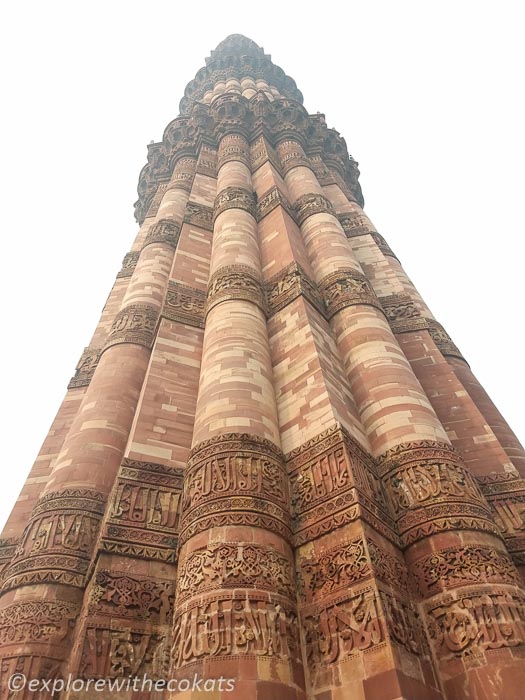
Quwwat-ul-Islam Mosque
Quwwat-Ul-Islam mosque was known as the Jami Masjid in the early days of its inception. It was then renamed as Quwwat-Ul-Islam Mosque meaning the ‘Might of Islam’.
The mosque mainly has a central courtyard and also a big prayer hall. One could observe a large massive stone screen standing in front of the prayer hall. The screen is beautifully carved and has inscriptions from the holy book of the Quran.
It is one of the oldest structures in India depicting the architecture influenced by the Ghurid dynasty. Eventually, many additions were made to this place by Iiltutmish and Alaundin Khilji.
The building was built of red sandstone, grey quartz, and white marble, however, the mosque is now in ruins and being looked after by the Archeological Survey of India.
If you are interested in studying the architecture of this place, going there early in the morning would be advisable. This way one can avoid the tourist rush. Read more about old mosques in the city of Bhopal.
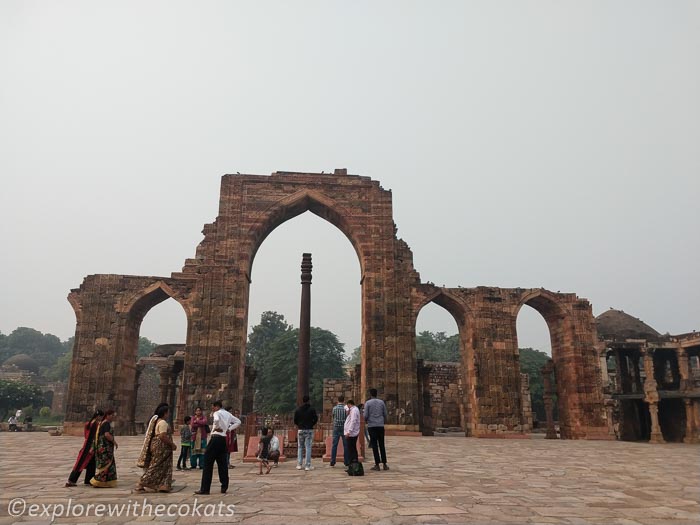
Alai Minar
This is the only unfinished structure in the complex and is associated with the fierce and over-ambitious Alaundin Khilji.
He wanted to outshine the work of Qutubudin Aibak and thus wanted to build this Minar which was supposedly double in size as the Qutub Minar. He wanted Alai Minar to be so tall that everyone in the world would recognize the might of the great Sultan. He believed that the height of the Minar would depict his greatness and courageous nature. He also wanted the Quwwat-Ul-Islam mosque to be increased by four times and hence there were four gates planned to be constructed to accommodate the big size of the mosque.
Although in ruins, it looks beautiful and gives insight into how beautiful and majestic it would have looked if it were completed.
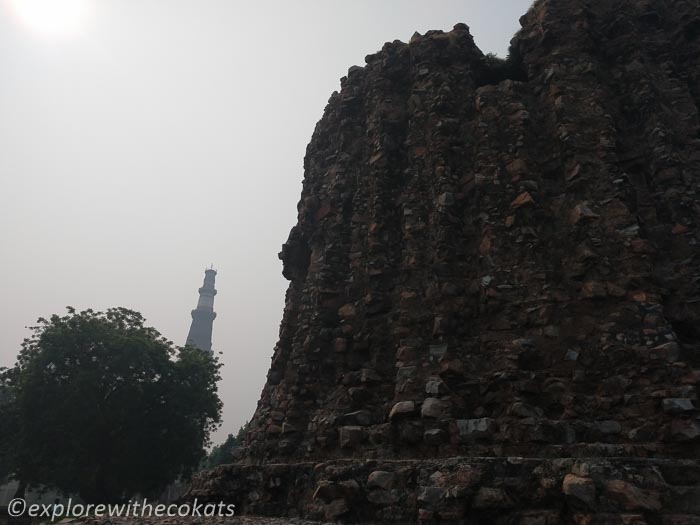
Iron Pillar of Chandragupta Maurya
Weighing around 6 tonnes, this Iron Pillar forms one of the important parts of the Qutub Minar Complex.
It is around 1600 years old and is exposed to different weather conditions in the city of Delhi, but it is standing tall without even an ounce of rust on it making it an amazing piece of metal for study by metallurgy experts.
It has inscriptions in Sanskrit and Gupta Brahmi language which date back to the time of Chandragupta Maurya and have been believed to have been erected to commemorate the victory of the king in various battles. It was dedicated to Lord Vishnu. It was first believed to be erected in Udayagiri which is located in present-day Madhya Pradesh and then brought to Delhi.
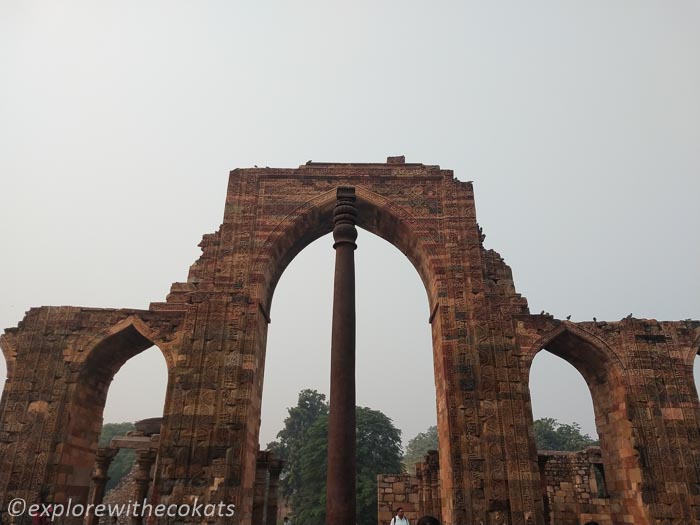
Tomb of Imam Zamin
Along with these monuments, the Qutub Minar Complex also houses the Tomb of Imam Zamin. Imam Zamim was a Turkestani Imam who lived in this Qutub Minar Complex during the reign of Sikandar Lodi. He came to Delhi in the 15th Century and was the Imam of the Quwwat-Ul-Islam mosque.
This tomb was constructed by Imam Zamin himself and was buried a few years after his death. The tomb is a small sandstone structure with an octagonal base.
Tomb & Madrasa of Alauddin Khilji
This is the only example of the Madrasa and Tomb combination in India and a part of the Qutub Minar Complex. The madrasa was built by Aladdin Khilji to propagate Islamic learning and his tomb is located within the madrasa. Though a mighty ruler, Alauddin Khilji, his tomb is the most simple in the city of Delhi as also it lies in ruins today.
It is said that Firoz Shah Tuglaq made a few repairs to the tomb but today one finds it in a secluded state. It is said by Sufi saints that it was a sight of pilgrimage earlier and people used to tie threads for the fulfillment of their wishes.
Tomb of Iltutmish
Another important part of the Qutub Minar Complex is the Tomb of Iltutmish. It is the first tomb of a Sultan in India and was built by Iltutmish himself. It is located in the North West direction of the Quwwat-Ul-Islam mosque.
The outer of the tomb is plain but the inner part is rich in decorative aspects. It has three beautifully carved arches.
The entrance has beautiful geometrical patterns and engraved motifs like lotus, diamonds, and wheels which also gives an insight of the local architecture prevalent at that time.
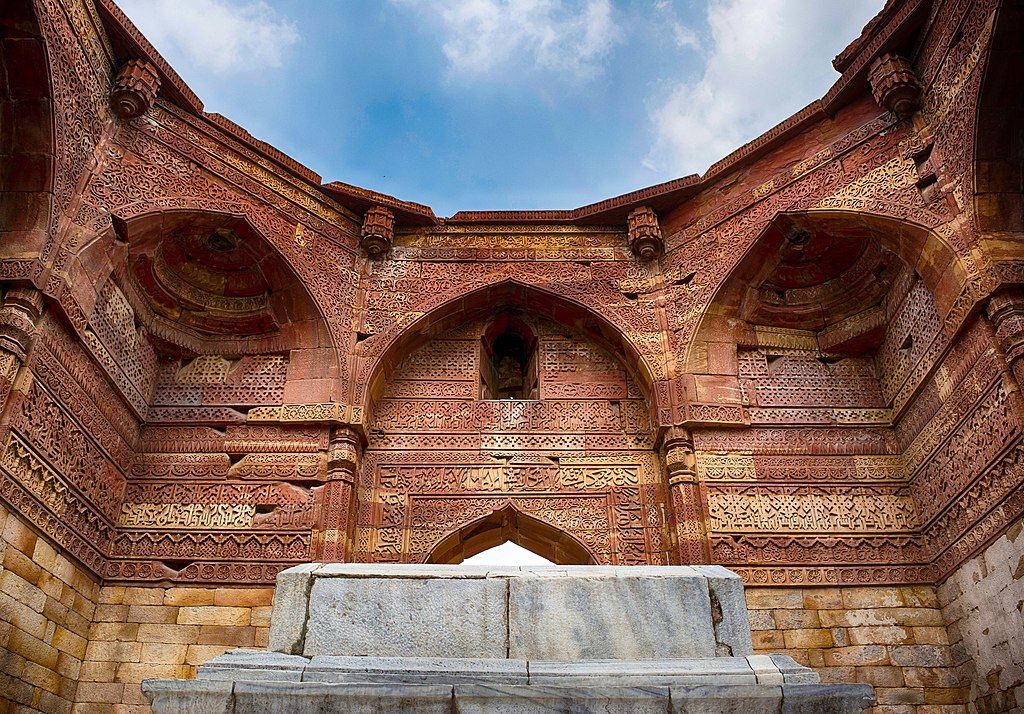
Alai Darwaza
Stands in the southern direction of the Quwwat-Ul-Islam Mosque in the Qutub Minar Complex, is the Alai Darwaza. It was a part of the massive enlargement project undertaken by Alauddin Khilji after his win over the Deccan part of India to show gratitude towards God for his victory.
Under this project, he wanted to enlarge the Quwwat-Ul-Islam and made four gates adjoining it in all four directions. As per his plans, only Alai Darwaza could be constructed as he died after its construction. It looks like a square-shaped domed house with arched entrances. It depicts Indo-Islamic architecture and is amongst the first structures built by such architecture in India.
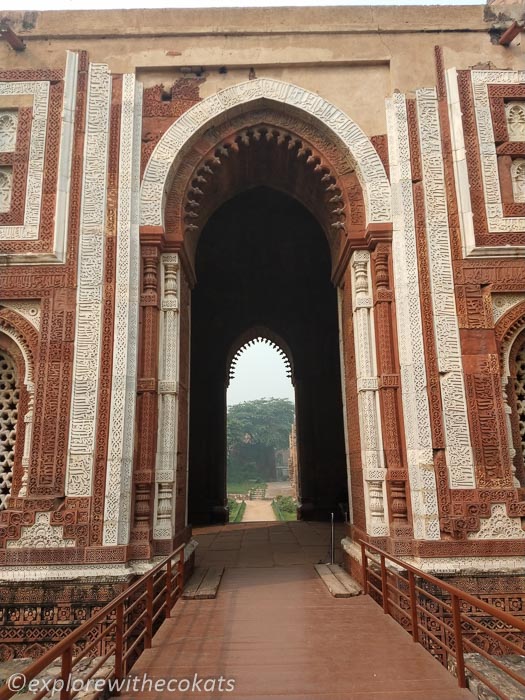
Sanderson’s sundial
Gordon Sanderson was the archaeologist of the Archeological Survey of India and this sundial has been installed to commemorate his achievements. He was appointed to undertake research on several historical buildings in Delhi, Agra, Gwalior, and nearby places.
Smith’s Folly
Folly, or the architectural disaster as mentioned by historians, is a cenotaph or a chhatri-shaped structure placed in the Qutub Minar Complex in Mehrauli, Delhi.
Qutub Minar has been struck by lightning and shaken by earthquakes making it vulnerable and efforts have been taken the time and again to restore the minaret. One such effort was made by Maj Robert Smith directed by the British Governor General of India, Lord Wellesly. He placed a Hindu-style cupola on an Indo-Islamic structure which looked absolutely out of place and out of sync. Hence, it was taken out and placed on the lawns of the Qutub Minar Complex.
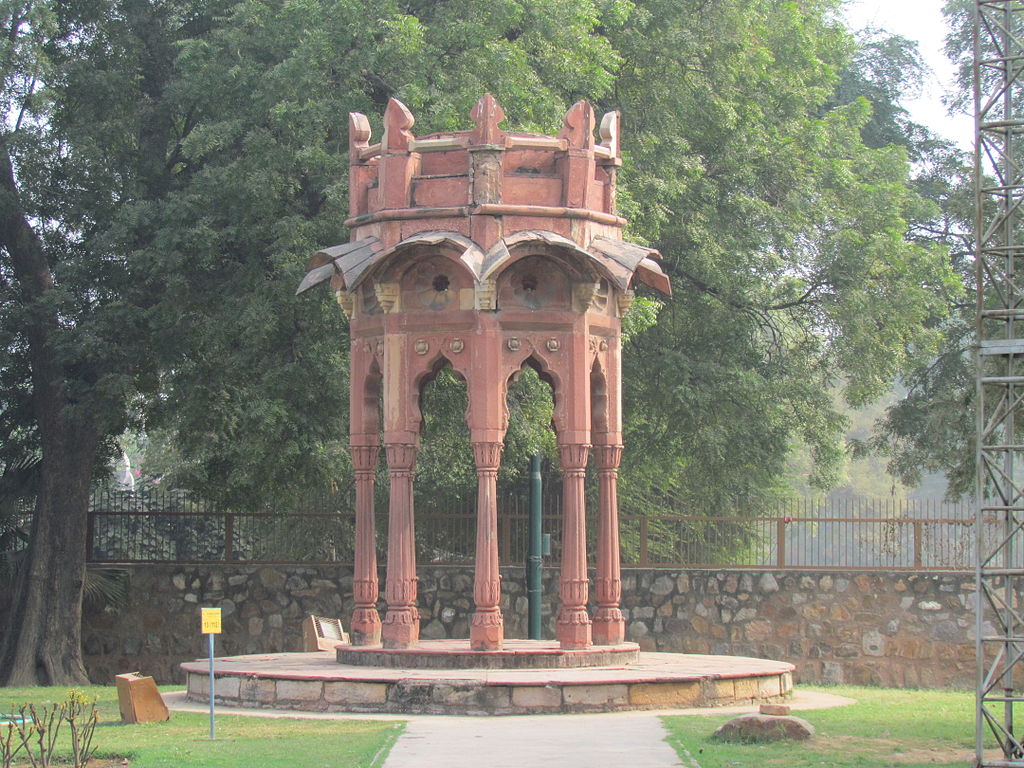
ESSENTIAL TRAVEL INFORMATION
Photography at Qutb Complex
Photography is allowed at the Qutub complex. One can click photos from a phone and DSLR with no extra charge. However, the use of tripods or any professional photography needs prior permission from ASI.
Qutub Minar Ticket Price (as of January 2023)
Indian nationals: INR 40
Foreign nationals: INR 500
Video Camera charge: INR 25
Best time to visit Qutb Minar complex
It is advisable to visit Qutub Minar in winter as the cool weather makes it comfortable for sightseeing.
The complex is open every day from 7 am to 5 pm. It opens up again at 7 pm in the evening for night viewing and closes back at 10 pm.
The experience at night is totally different from that of the day as many of the structures including the Qutub Minar are all lit up at night beautifying it to another level.
How to reach Qutub Minar by Metro, Bus, Taxi, Auto
The nearest metro station to Qutub Minar Complex is Qutub Minar Metro Station which is on the yellow line of the Delhi Metro Rail Network. The approximate distance of Qutub Minar from the metro station is 1.60 Kilometres. Auto Rickshaws and taxis are available here and one can also take a DTC bus which has a good frequency.
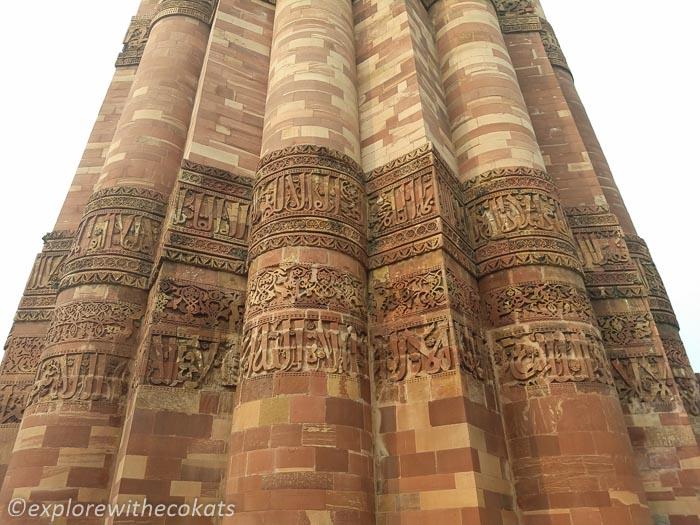
WHERE TO STAY IN MEHRAULI, DELHI
Since all touristy things are spread across Delhi, it may be difficult to decide the area of accommodation in Delhi. South Delhi and Mehrauli offer a few upscale spaces but are safer. Most places have good connectivity with auto-rickshaws, app-based taxis and metro.
There are great options for hotels, resorts, homestays and hostels in Delhi. Some of the options are:
Luxury hotel: ITC Maurya, The Imperial Hotel, The Lodhi
Mid Range hotel: The Claridges, New Delhi, Radisson Blu, CP, Radisson Blu, Dwarka
Homestay: Prakash Kutir B&B, Thikana Delhi
Hostel: The Hosteller, Madpackers Delhi, Zostel Delhi
FAQs for QUTUB MINAR COMPLEX
What is included in the Qutub complex?
Apart from the Qutub Minar, other monuments include Quwwat ul-Islam Mosque, Alai Darwaza gate, the Alai Minar and the Iron pillar.
Who built the Qutub Minar complex?
Qutbu’d-Din Aibak laid the foundation of Minar in AD 1199 for the use of the muezzin (crier) to give calls for prayer and raised the first storey. Later on, three more storeys were added by his successor and son-in-law, Shamsu’d-Din Iltutmish.
How many steps are there in Qutub Minar?
The whole tower contains a spiral staircase of 379 steps. Each storey has a balcony that encircles the tower.
Is entry allowed inside Qutub Minar?
No entry inside Qutub Minar is prohibited since the fatal stampede in 1981.
Is worship allowed in Qutb Complex?
As per the Ancient Monuments Act, the Qutub Minar Complex is a monument and no right to worship can be granted at this place.
What is Qutub Festival?
To celebrate the cultural legacy, Qutub Festival is organised every year in the month of November & December. It’s an art festival which happens for three days witnessing live performances of various singers, dancers, and artists.
Are bags allowed in Qutub Complex?
Visitors are not allowed to take any kind of luggage inside the complex. There is a cloakroom, where you will have to deposit bags, backpacks, etc. No food is allowed inside the complex, except drinking water.
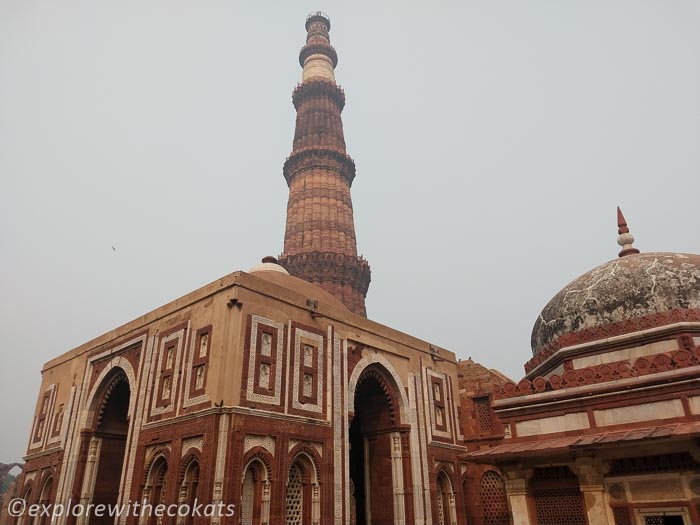
SUSTAINABLE TIPS FOR VISITING QUTUB MINAR COMPLEX
- Do not write on or distort the rocks of the fort. You are witnessing a portion of history so respect it.
- The monuments of Qutub have stood the test of time. It’s good to respect them by not writing names or scratching the surface.
Read More posts from Delhi here
Disclaimer – This post contains affiliate links. It means it adds no extra cost to you if you book through the link but I get a referral bonus which helps me earn a little to keep this website up and running. Read about my Privacy Policy.
Pin this post!
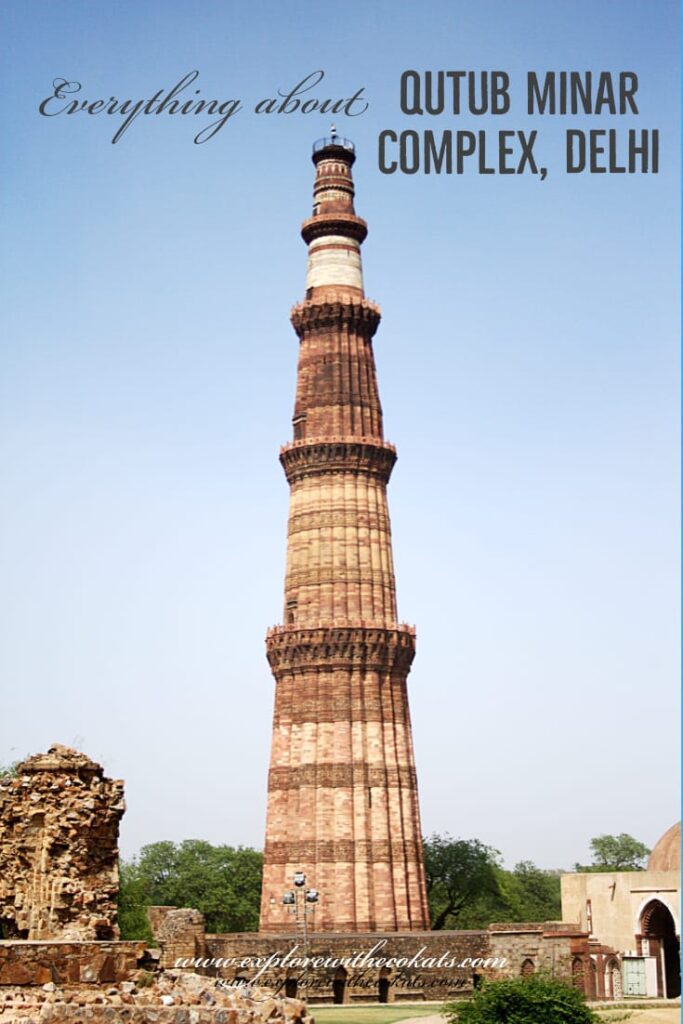

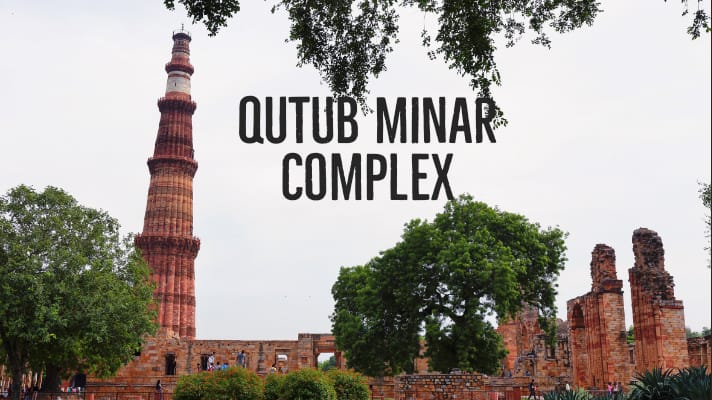
2 comments
Ms Renu you have written so well about this historic monument qutub minar. I especially liked the part on Smith’s folly…which am sure many of us wouldn’t know. Thank you so much for giving us a detailed glimpse into the past…we would surely be enlightened travellers with ecokarts as our travel mate. Keep writing ..best wishes
Thank you for your kind words 🙂